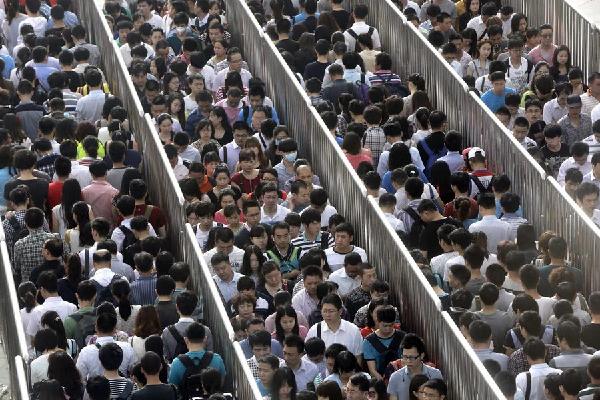 |
|
A Chinese migrant worker cleans the exterior window of a high-rise building in Beijing, China, April 24, 2015. [Photo/IC] |
The number of migrant population in China, those who left their places of origin to seek employment or education elsewhere, is expected to reach 291 million in 2020 with an annual increase of about 6 million, according to a health official.
The growth rate is slower than the previous five years, when the number of migrants grew by 8 million every year.
The National Health and Family Planning Commission released the 2015 China's migrant Population Development Report in Beijing on Wednesday.
The migrant population in China reached 253 million by the end of 2014, said Wang Qian, director of migrant population and family planning administration under the commission. The number represents about one sixth of the country's total population.
He said that the migrant population in China, including those expected to register their permanent residence in cities, is expected to reach 291 million in 2020, among whom 220 million are migrants from rural areas to cities and 70 million migrants between cities.
In the next five years, population will continuously aggregate in areas along river, coast and rail lines. Large and mega-cities will see continuous population growth as immigrants are expected to pour in. Meanwhile, the population exchanges between cities will become more active as the policy of regional economic integration across China pushes forward, said Wang.
 |
|
Passengers line up and wait for a security check during morning rush hour at a subway station in Beijing May 27, 2014. [Photo/Agencies] |
A noticeable trend is that an increasing number of migrants migrate with their family members. The size of migrant families has become larger in immigrant regions, from the workforce themselves only in the beginning to including their spouses and children, and now, even their parents.
The survey shows that for the younger-generation floating population who are married, nearly 90 percent migrate with their spouses and 60 percent with their spouses and children. China is now in the prime time of couples migrating with their children and the emerging trend is that including their parents.
Wang also said that in 2014, 78 percent of the floating population is aged between 15 to 59, the age of the working population, 2 percent lower from that in 2010. The average age of migrants keeps rising, with the percentage of those above 45-years-old jumping to 12.9 percent in 2014 from 9.7 percent in 2010. It means that immigrant regions face greater pressure in implementing social welfare policies and providing public services.
Also, the percentage of those at an education level of junior college or above continues to grow from 7.6 percent in 2010 to 12.1 percent in 2014. These people require more diversified public services as well.
